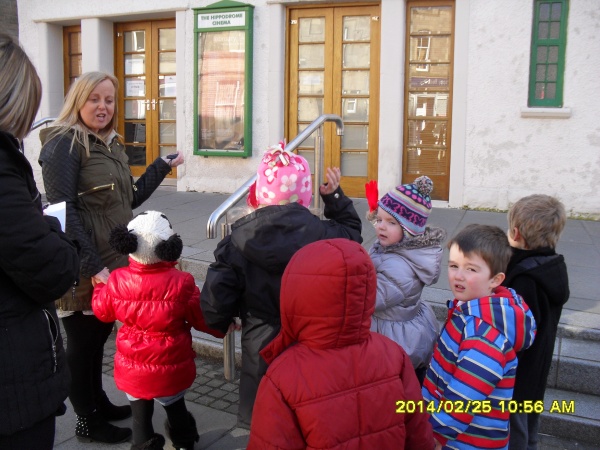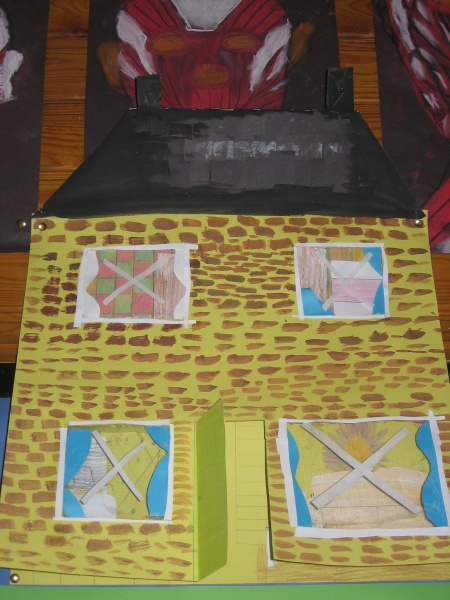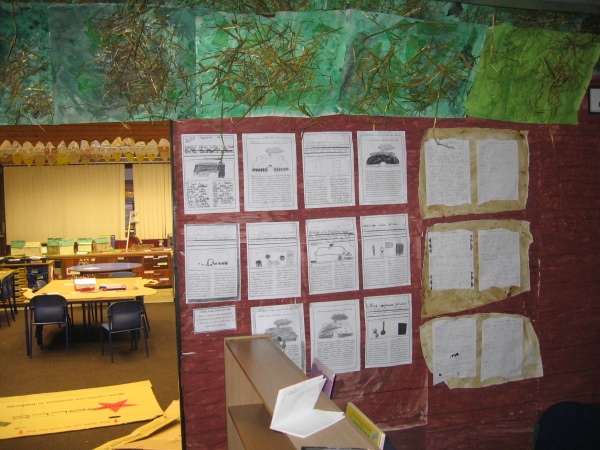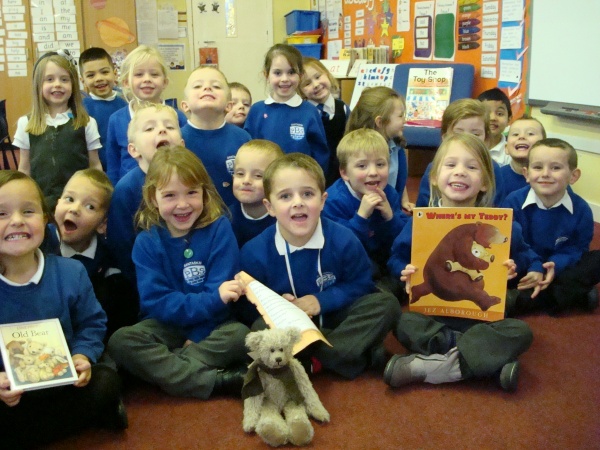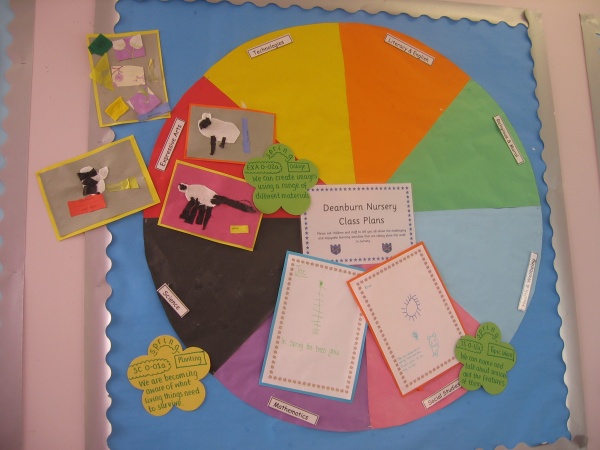 Deanburn Primary School nursery staff have been developing their approach to planning interdisciplinary learning with Yvonne McBlain, curriculum support teacher from Falkirk Education Services. They took an enquiring approach to exploring how their planning procedures could help them to identify and select related “bundles” of experiences and outcomes which were relevant for their learners. Caroline McKay, principal teacher with nursery responsibility, and Karen Stewart, senior early years officer, took an innovative approach to integrating learning through the storyline approach. During the project, Yvonne worked with the team for half a day once a week with a working lunch evaluation/planning meeting straight afterwards. The team used the storyline approach to explore how the children would engage with an initial stimulus story linked to winter and Jack Frost. Click here to read the stimulus story.
Deanburn Primary School nursery staff have been developing their approach to planning interdisciplinary learning with Yvonne McBlain, curriculum support teacher from Falkirk Education Services. They took an enquiring approach to exploring how their planning procedures could help them to identify and select related “bundles” of experiences and outcomes which were relevant for their learners. Caroline McKay, principal teacher with nursery responsibility, and Karen Stewart, senior early years officer, took an innovative approach to integrating learning through the storyline approach. During the project, Yvonne worked with the team for half a day once a week with a working lunch evaluation/planning meeting straight afterwards. The team used the storyline approach to explore how the children would engage with an initial stimulus story linked to winter and Jack Frost. Click here to read the stimulus story. 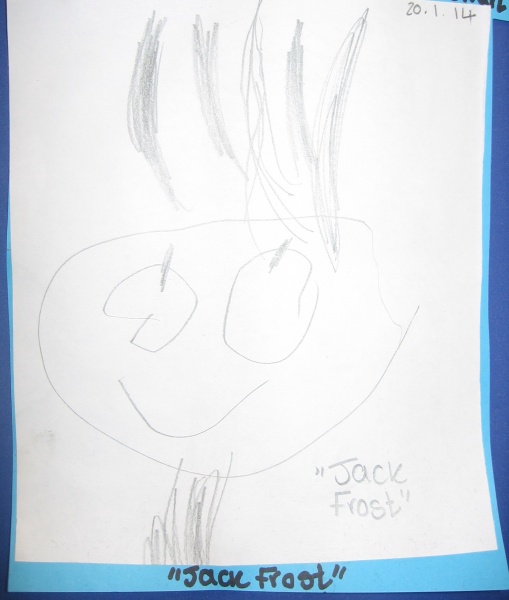
In this way, planning for next steps responded to the children’s interest and engagement with the characters and the story. Click here to see the initial simple daily plan which was trialled for use in the floor book. As suspected, this proved unsustainable as a planning procedure in the long term, but has helped the team explore exactly where and how they met the essential elements of the NAR planning flow chart – they are still tweaking their planning formats to maximise impact, but minimise unnecessary workload. The project included an opportunity for parents to take part in the storyline and was very positively evaluated – click here to see some parental evaluation. Clicking here will allow you to see the results of the assessment activity designed to guage impact on the pupils – lots to consider from a sample assessment! Everyone involved was fascinated to observe the degree to which each child opted in and out of the storyline context while still fulfilling the learning intentions and success criteria during free play, outdoor time and group time. 
As a result of the project, the team are now consolidatng the children’s knowledge of the seasons through relevant development of specific skills, understanding and attitudes across the curriculum. Click here to see the floor book page gathering the children’s existing knowledge of spring. Karen and the early years officers have developed their use of the floor book as a record of all of the learning taking place across nursery. They now feel that their ability to evidence and track progression in learning is enhanced by the changes they have made. As can be seen from the photo at the start of the post, the team are also developing their use of a learning wall in the waiting area to try to inform and engage parents as much as possible in their child’s learning processes. The experience as a whole has supported the team in reviewing their systems to meet the requirements of the NAR planning flowchart and improve their application of the principles of curriculum design – both for discrete and interdisciplinary learning.
